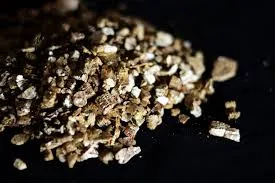Sep . 13, 2024 10:36 Back to list
insulation material for air conditioning pipe
Insulation Material for Air Conditioning Pipes
Air conditioning systems are essential for maintaining comfortable and consistent indoor temperatures, especially in hot climates. However, the efficiency of these systems can be significantly affected by the type of insulation used on the connecting pipes. Insulation materials play a vital role in minimizing energy loss, preventing condensation, and ensuring optimal performance of the air conditioning system.
When selecting insulation materials for air conditioning pipes, several factors must be considered, including thermal resistance, moisture resistance, durability, and cost-effectiveness. The primary goal is to reduce heat transfer between the refrigerant in the pipes and the surrounding environment. This is vital for enhancing the overall efficiency of the air conditioning system.
One of the most commonly used insulation materials is elastomeric foam. This type of insulation is known for its excellent thermal properties and flexibility, which make it ideal for various pipe sizes and configurations. Elastomeric foam effectively reduces heat transfer and prevents condensation, which can lead to water damage and mold growth in buildings. Its closed-cell structure also provides resistance to moisture ingress, making it a preferred choice for both commercial and residential applications.
insulation material for air conditioning pipe

Another popular option is fiberglass insulation, which consists of glass fibers and is often used for larger pipes. Fiberglass insulation offers high thermal resistance and is available in various densities. However, it is essential to ensure that fiberglass insulation is properly faced or coated with a vapor barrier to prevent moisture from penetrating the material.
Polyethylene foam is another insulation solution that offers flexibility and ease of installation. This material is lightweight, making it easy to handle and cut. Polyethylene foam is also resistant to moisture and provides good thermal insulation, though it may not be suitable for high-temperature applications.
In recent years, rigid foam insulation, such as polyisocyanurate, has gained popularity due to its high R-value per inch of thickness. This type of insulation is ideal for applications where space is a constraint, allowing for effective insulation in tighter installations.
In conclusion, the insulation material chosen for air conditioning pipes significantly impacts system performance and energy efficiency. Whether you opt for elastomeric foam, fiberglass, polyethylene foam, or rigid foam, each material has its unique advantages. By carefully selecting the right insulation, property owners can improve energy efficiency, reduce utility costs, and extend the lifespan of their air conditioning systems while maintaining a comfortable indoor environment.
-
Eco-Friendly Granule Covering Agent | Dust & Caking Control
NewsAug.06,2025
-
Fe-C Composite Pellets for BOF: High-Efficiency & Cost-Saving
NewsAug.05,2025
-
Premium Tundish Covering Agents Exporters | High Purity
NewsAug.04,2025
-
Fe-C Composite Pellets for BOF | Efficient & Economical
NewsAug.03,2025
-
Top Tundish Covering Agent Exporters | Premium Quality Solutions
NewsAug.02,2025
-
First Bauxite Exporters | AI-Optimized Supply
NewsAug.01,2025
